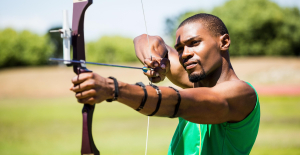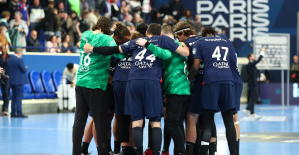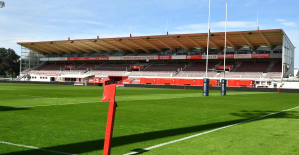There was a time when we knew almost every fish in the Red Sea by name. Well, not only in the biological in Latin (for example Amphiprion bicinctus) or German (Rotmeer-Anemonenfisch) or in diving (Clownfish) or snorkeling (Nemo). No, we dived so often between Jordan and Sudan that we knew almost every animal by first and last name and registration address: Nepomuk Napoleon, Jackfish Alley. Markus Manta, Shaab Rumi.
At least that's how it seemed to us - but then came the Russians (to Egypt), the coral bleachers (to the reefs) and later the children (to our family). So it was over with four diving vacations per year and four dives a day. The Red Sea was shelved for almost 20 years. But the longing remained.
Not only those for reefs and fish, but also those for warm weather. Unlike in previous years, the winter holiday prospect of Tyrolean snow did not attract us much. We – my wife, our two daughters and I – preferred sun. But where? Europe still too cold in February, the Canary Islands too Atlantic, the absurdity of Dubai is out of the question altogether. And for a week in the tropics? Wasn't an option either – not a good travel-life balance.
So the return to the tolerably subtropically warm arms of the old lover in January remained. To Egypt. We booked, out of convenience and still affected by the corona virus, a week in Soma Bay. Because the place was the only white spot in our Red Sea biography, because of the long beach and the small house reef in front of the "Robinson Club" there.
At the beginning of the 2000s, the Red Sea was at an end: too many snorkelers, too many and too bad divers, who hiked over the reef roofs or touched and ripped everything under water, plus the climate-related bleaching of corals and countless crown-of-thorns starfish that literally ate the corals - all of that had turned the paradisiacal underwater gardens into shimmering white deserts.
Tourism, which had secured some prosperity for Egypt for a few years, destroyed its own foundation. Then more and more cheap locals came from the east, already at seven o'clock in the morning on the submersible with the vodka bottle on their neck, even the most dignified facilities became Russian discos. And finally the big end: Corona.
And what is it like there today? First the underwater view. We dive down, only a few meters deep. It goes over sandy ground to the house reef. Then the first tiny block, a reef miniature. But with living soft corals and the first anemone fish.
We reach the main block, a pretty, jagged reef formation. A large boxfish stares out of a cave, we dive through a shimmering school of juvenile fish, which small perch keep bumping into. A blue spotted stingray flutters out of the sand.
The sun breaks brightly through the blue of the surface and lets the soft corals shine: yellow, red, violet - lively. The tough cnidarian colonies are also in surprisingly good condition – the fire corals tower up to three meters in height. Of course there are fragments of coral on the floor, but this no longer compares to the wasteland of two decades ago.
We can't do a pure diving holiday yet, our younger daughter Pauline is just seven years old and too small for that. But I dive three times with Helene on the house reef. She is already ten and has already dived off Mallorca and Crete. The Red Sea immediately casts a magical spell on you.
"The most beautiful thing ever," she says after the last trip, even our diving instructor raves about the 64-minute trip including an eagle ray in the blue sea. Although we are shivering with an outside temperature of just 19 degrees and a fairly sharp wind, it was worth every minute under water, including getting up early.
Otherwise snorkeling. A few hundred meters from the hotel, a jetty goes to the outer reef. I look longingly down into the blue nothingness. And straight back onto the steep wall. Here, too, fauna and flora are in excellent condition. Are three Corona years enough for the regeneration of the reefs? "No," says the dive guide, "but the reefs in Soma Bay have always been well cared for."
We take a long walk along the beach, the stiff breeze almost creates a North Sea feeling, although the sun is always burning in the always cloudless sky even in winter. This makes Soma Bay a prime spot for kite surfers who are not as common elsewhere in Egypt. Stand-up paddling boards and catamarans are also available for hire.
On the other side of the bay: the typical Egyptian building ruins - nothing has changed about that. Multi-storey hotels under construction, then the money runs out or the investor is surprised to find that he does not have a building permit. It's also possible that there are still the ruins of the noughties. In Egypt, people like to leave old things standing.
After all: Soma Bay is to be developed. Work is being done on the construction sites for the chalets and condos along the coast, from 100,000 euros you can become a holiday home owner here. The coastal promenade and the beach clubs are already finished, in which only three of an estimated 150 sun loungers are occupied.
And a small art village with knick-knack shops, pharmacy, mini market, brokerage and a restaurant (the sign “open thursday and friday from 18 pm to 11 pm” is a bit strange). Diving, sailing and golf should attract long-term vacationers. We'll see if it works. The political situation in the country is stable but uncomfortable. Even more military than before, more police.
Most Red Sea tourists don't leave their facilities anyway - and if they do, then they take the almost five-hour convoy ride to Luxor. In the 26 years since the terrorist attack in Hatshepsut's temple there, the fear has never completely gone away.
There is nothing to complain about at our club domicile: the audience is refreshingly untattooed, they know that a buffet is not a battle zone and swimming trunks are not restaurant attire. Tennis rackets and SUPs are free, diving is cheap, and the food is excellent. Plastic straws are prohibited. If you like it, you can also spend an afternoon quad biking between the Red Sea and the Sand Sea.
Of course we also want to see Hurghada again. A good three quarters of an hour by taxi. As soon as you exit the Soma Bay zone, which is almost aseptically clean, tons of plastic waste are still billowing and rolling across the desert. The ugly little town that is growing far too fast has become a big ugly city that is sprawling further and further along the coast.
On Hurghada's Sheraton Road, the main shopping street, the stores are called "Karstadts Sport", "Obi" and "Lild"; they are cheap fakes like the bags, t-shirts and plaster of paris pyramids offered here. Much is signposted in Russian. Alone: This audience no longer exists. The sellers desperately bait the few tourists.
In the side streets to the marina, the way over the crumbling sidewalks is a pothole course. Hardly any women on the street (but all the more behind the airport counters). The military government is formally committed to equal rights, but little is actually happening. Despite draconian punishments, nowhere else in the world is there as much genital mutilation as in Egypt.
Behind the marina's guarded fence is actually a fairly pretty promenade with bars and cafes. There is no longer anything like the legendary "Parrot Bar", the meeting place for the diving community at the time. With one of the typical dive boats we go on a dolphin tour - we quickly realize that we will not see any dolphins. In view of the many groups of snorkelers who are thrown into the sea by other boats, almost lucky, at least for the animals.
We drive to lonelier reefs that we know from before: Fanadir and Abu Galau. And are surprised again: Not only in Soma Bay, but also here, within sight of the Moloch Hurghada, the corals are in very good condition, the fish population is surprisingly high. At least under water some things have changed for the better.
Egypt revisited - what remains after this fast week? We won't come as often as we did back then, at least not before both daughters are allowed to dive alone. The Red Sea is - again - one of the best diving areas in the world. And the true beauty of the country lies beyond the fringing reef. And of course on the Nile, between the sites of the dead and the cities of high civilization. But the best way to explore it is on a Nile cruise from Luxor to Aswan. The rest of the country: a lot of sand in nothing.
How to get there: Hurghada is Egypt's main airport on the Red Sea. From Germany, for example, Condor, Tuifly, Eurowings or Corendon fly there non-stop, Egyptair flies with a change in Cairo. The journey from Hurghada to Soma Bay takes around 45 minutes by transfer bus.
Accommodation: The club "Robinson Soma Bay" is recommended for families. The "Kempinski" and the "Sheraton" offer a higher standard; "The Breakers" is more for travelers, but is closed until April for renovation. All hotels can be booked through tour operators as a package, TUI offers a week in the “Robinson” with full board and flights from 1375 euros per person, with FTI seven days in the “Kempinski” cost from 981 euros per person in a double room with flight and half board.
Diving: There are two dive centers in Soma Bay: one at Robinson and the Orca Dive Club. A half-day boat trip costs around 50 euros, a dive for beginners around 100 euros (orca-diveclubs.com).
More information: egypt.travel

 United States: divided on the question of presidential immunity, the Supreme Court offers respite to Trump
United States: divided on the question of presidential immunity, the Supreme Court offers respite to Trump Maurizio Molinari: “the Scurati affair, a European injury”
Maurizio Molinari: “the Scurati affair, a European injury” Hamas-Israel war: US begins construction of pier in Gaza
Hamas-Israel war: US begins construction of pier in Gaza Israel prepares to attack Rafah
Israel prepares to attack Rafah Spain is the country in the European Union with the most overqualified workers for their jobs
Spain is the country in the European Union with the most overqualified workers for their jobs Parvovirus alert, the “fifth disease” of children which has already caused the death of five babies in 2024
Parvovirus alert, the “fifth disease” of children which has already caused the death of five babies in 2024 Colorectal cancer: what to watch out for in those under 50
Colorectal cancer: what to watch out for in those under 50 H5N1 virus: traces detected in pasteurized milk in the United States
H5N1 virus: traces detected in pasteurized milk in the United States Private clinics announce a strike with “total suspension” of their activities, including emergencies, from June 3 to 5
Private clinics announce a strike with “total suspension” of their activities, including emergencies, from June 3 to 5 The Lagardère group wants to accentuate “synergies” with Vivendi, its new owner
The Lagardère group wants to accentuate “synergies” with Vivendi, its new owner The iconic tennis video game “Top Spin” returns after 13 years of absence
The iconic tennis video game “Top Spin” returns after 13 years of absence Three Stellantis automobile factories shut down due to supplier strike
Three Stellantis automobile factories shut down due to supplier strike A pre-Roman necropolis discovered in Italy during archaeological excavations
A pre-Roman necropolis discovered in Italy during archaeological excavations Searches in Guadeloupe for an investigation into the memorial dedicated to the history of slavery
Searches in Guadeloupe for an investigation into the memorial dedicated to the history of slavery Aya Nakamura in Olympic form a few hours before the Flames ceremony
Aya Nakamura in Olympic form a few hours before the Flames ceremony Psychiatrist Raphaël Gaillard elected to the French Academy
Psychiatrist Raphaël Gaillard elected to the French Academy Skoda Kodiaq 2024: a 'beast' plug-in hybrid SUV
Skoda Kodiaq 2024: a 'beast' plug-in hybrid SUV Tesla launches a new Model Y with 600 km of autonomy at a "more accessible price"
Tesla launches a new Model Y with 600 km of autonomy at a "more accessible price" The 10 best-selling cars in March 2024 in Spain: sales fall due to Easter
The 10 best-selling cars in March 2024 in Spain: sales fall due to Easter A private jet company buys more than 100 flying cars
A private jet company buys more than 100 flying cars This is how housing prices have changed in Spain in the last decade
This is how housing prices have changed in Spain in the last decade The home mortgage firm drops 10% in January and interest soars to 3.46%
The home mortgage firm drops 10% in January and interest soars to 3.46% The jewel of the Rocío de Nagüeles urbanization: a dream villa in Marbella
The jewel of the Rocío de Nagüeles urbanization: a dream villa in Marbella Rental prices grow by 7.3% in February: where does it go up and where does it go down?
Rental prices grow by 7.3% in February: where does it go up and where does it go down? Even on a mission for NATO, the Charles-de-Gaulle remains under French control, Lecornu responds to Mélenchon
Even on a mission for NATO, the Charles-de-Gaulle remains under French control, Lecornu responds to Mélenchon “Deadly Europe”, “economic decline”, immigration… What to remember from Emmanuel Macron’s speech at the Sorbonne
“Deadly Europe”, “economic decline”, immigration… What to remember from Emmanuel Macron’s speech at the Sorbonne Sale of Biogaran: The Republicans write to Emmanuel Macron
Sale of Biogaran: The Republicans write to Emmanuel Macron Europeans: “All those who claim that we don’t need Europe are liars”, criticizes Bayrou
Europeans: “All those who claim that we don’t need Europe are liars”, criticizes Bayrou These French cities that will boycott the World Cup in Qatar
These French cities that will boycott the World Cup in Qatar Archery: everything you need to know about the sport
Archery: everything you need to know about the sport Handball: “We collapsed”, regrets Nikola Karabatic after PSG-Barcelona
Handball: “We collapsed”, regrets Nikola Karabatic after PSG-Barcelona Tennis: smash, drop shot, slide... Nadal's best points for his return to Madrid (video)
Tennis: smash, drop shot, slide... Nadal's best points for his return to Madrid (video) Pro D2: Biarritz wins a significant success in Agen and takes another step towards maintaining
Pro D2: Biarritz wins a significant success in Agen and takes another step towards maintaining


















